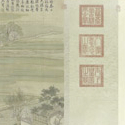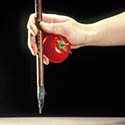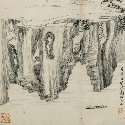|
|
| Show All 16 Results (Text Only) |
|
| Minneapolis Institute of Arts: The Art of Asia |

|
| Minneapolis Institute of Arts
|
The Explore the Collection section of this content-rich site features nearly 3,500 objects from the MIA's collection of Asian art. All images have a Zoom View; most images have descriptions. A Featured Objects section highlights 20 objects from the collection in great detail (through curator interviews), and six Featured Collections showcase objects in the following categories: 1) Ancient Chinese Bronzes; 2) Architectural Models; 3) Chinese Furniture; 4) Imperial Silks; 5) Taoist Art; and 6) Ukiyo-e. Users can also browse objects by country/region or by one of 15 subject categories (architecture, paintings, ceramics, drawings, etc.) or use the keyword search. An Add to My Collection feature allows users to create an online gallery to save and to share.
Go to Museum Resource: http://archive.artsmia.org/art-of-asia/explore/index.html | |
|
|
| Attitudes Towards Nature in Daoist Art |
|
| Asia Society
|
Lesson plan that helps students understand the difference between how many Westerners view nature versus how many Chinese (particularly Daoists and the literati) felt about the natural world around them. Uses Chinese poems and landscape paintings as primary sources.
Go to Museum Resource: http://asiasociety.org/education-learning/resources-schools/elementary-lesson-p... | |
|
|
| Brushstrokes: Styles and Techniques of Chinese Painting [PDF] |
|
| Asian Art Museum of San Francisco
|
"Brushpainting, which includes calligraphy, landscapes, scrolls and fans, has been a major art form throughout Chinese history. This packet explores the history, development and significance of brushpainting in Chinese art. Includes discussion of painting and calligraphy techniques, and a comparison of painting styles."
Go to Museum Resource: https://education.asianart.org/wp-content/uploads/sites/6/2019/09/Brushstrokes.... | |
|
|
|
| Exploring Chinese Painting: A Test Module for Undergraduate Teaching |
|
| Columbia University, Media Center for Art History
|
A workspace allowing students to view and compare a group of important Chinese hand scrolls and hanging scrolls from the 10th to the 17th centuries. Uses Flash.
Go to Museum Resource: http://projects.mcah.columbia.edu/nehasian/zoomify/scrolls/swf/start.html | |
|
|
| An Introduction to Chinese Brushpainting Techniques |
|
| Asian Art Museum of San Francisco
|
“Experience for yourself the art of brush-and-ink painting. Begin by learning how to hold the brush. Once you feel comfortable, experiment by applying varying degrees of pressure, speed, and moisture. Finally, create your own brushpainting masterpiece.” Downloads include visual instructions and a teachers packet.
Go to Museum Resource: https://education.asianart.org/resources/an-introduction-to-chinese-brushpainti... | |
|
|
| An Introductory Course to Chinese Painting |
|
| LACMA, Los Angeles County Museum of Art
|
This free, online introduction to Chinese painting is divided into short video segments of 2-5 minutes, covering formats, styles, meanings, and more. Viewers are able to choose topics of interest to them.
Go to Museum Resource: https://lacma.teachable.com/p/chinese-painting | |
|
|
| A Look at Chinese Painting in The Metropolitan Museum of Art |
|
| The Metropolitan Museum of Art
|
Examines seven Chinese paintings and calligraphies from the Asian art collection at The Metropolitan Museum of Art and discusses answers to seven questions that viewers often have about Chinese paintings in general: 1) What materials did the artist use to create this painting; 2) Why is there only writing in this image; 3) Why didn't the artist use any color in this painting; 4) What is this image about; 5) Why did the artist choose this shape for this painting; 6) Why are red stamps placed all over this painting; 7) How is nature depicted in Chinese landscape paintings?
Go to Museum Resource: http://www.metmuseum.org/toah/hd/chin/hd_chin.htm | |
|
|
|
| Show All 16 Results (Text Only) |









